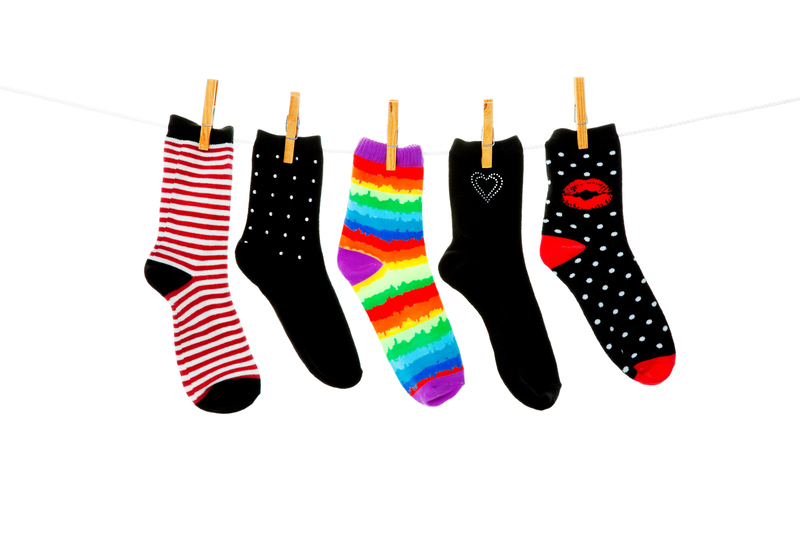Say Goodbye to Burn Marks on Your Stovetop Surface
Posted on 24/05/2025
Say Goodbye to Burn Marks on Your Stovetop Surface: The Ultimate Cleaning Guide
Looking to eliminate burn marks on your stovetop surface? Burn stains and scorch marks not only affect the aesthetic appeal of your kitchen, they also reduce the lifespan and efficiency of your stove. Whether you have a glass-top stove, a ceramic cooktop, or a traditional metal burner, it's possible to keep your stovetop looking spotlessly clean. In this comprehensive guide, you'll discover practical, effective, and safe solutions to remove burn marks from your stovetop surface--and keep them away for good!

Understanding Burn Marks: Why Do They Occur?
Before you can effectively remove burn marks from your stove surface, it's essential to understand how these troublesome burn stains form. Burn marks typically result from:
- Spilled food that is left to dry and bake onto the surface due to high heat.
- Overheating pans or pots that directly scorch the stovetop.
- Using incompatible cookware or cleaning agents which deteriorate the cooktop finish.
- Neglected routine cleaning that lets residue build up and harden with each use.
Burn stains are more than just a cosmetic nuisance. Over time, residue can affect heat distribution and even produce unpleasant odors, making cleaning not just a matter of appearance but also of kitchen hygiene.
Preparing Your Stove for Cleaning
Before attacking burn marks on your stovetop, it's vital to prep your stove and gather the right tools. Here's how:
- Unplug or turn off the stove: Always make sure your stovetop is completely cool and, for electric stoves, that it's unplugged before cleaning.
- Gather your supplies: What you'll need depends on the method, but basics include baking soda, white vinegar, dish soap, microfiber cloths, a soft sponge, and possibly a razor blade scraper for stubborn stains on glass or ceramic surfaces.
- Remove grates and burners: For gas and coil electric stoves, take off removable parts and soak them separately in warm soapy water.
How to Remove Burn Marks from Glass and Ceramic Stovetops
Glass and ceramic cooktops are popular for their sleek, modern appearance, but they show burn marks very clearly. Don't worry--these methods will help your cooktop shine again:
The Baking Soda and Vinegar Method
- Sprinkle a generous layer of baking soda directly on the burn marks.
- Spray or drizzle a little white vinegar over the baking soda. It will fizz, which means it's breaking down the stain.
- Let the mixture sit for at least 15 minutes for tough scorch marks.
- Using a soft damp sponge or cloth, gently scrub the area in circular motions. Avoid abrasive pads that might scratch the surface.
- Wipe clean with a microfiber cloth and some warm water.
This chemical reaction lifts most burn stains off your cooktop without much elbow grease.
Using a Razor Blade for Burnt-On Residue
If the above method doesn't fully remove the burnt mark from your stovetop surface, try this technique:
- Carefully hold a clean razor blade at a 45-degree angle.
- Gently scrape the residue, working slowly to avoid scratching the glass or ceramic.
- Wipe away loosened debris, then clean with baking soda and vinegar as above.
- Finish with a glass stovetop polish (optional) for added shine.
Pro tip: Never use the razor blade on a dry surface. The area should always be wet to prevent damaging your stovetop.
How to Remove Burn Marks from Metal Stovetops (Gas and Electric)
Metal stovetops, including those with gas burners or electric coils, are typically tougher than glass, but they can also develop stubborn burn stains.
Cleansing with Soapy Water and Baking Soda Paste
- Mix a thick paste of baking soda and a few drops of water.
- Spread the paste directly on the burn marks, let it sit for 10-20 minutes.
- Use a non-abrasive scrubbing pad or old toothbrush to gently work the area.
- Wipe clean with warm soapy water.
- Dry thoroughly to prevent rust or water spots.
Addressing Stubborn Burn Stains
- Apply a commercial degreaser or stove cleaner, following product instructions carefully.
- For extreme cases, you can use a pumice stone (only on metal surfaces, not glass) to gently buff away the marks.
- Rinse thoroughly after using chemical cleaners to avoid lingering fumes or residue.
Natural Solutions: Eco-Friendly Burn Mark Removal
If you prefer a chemical-free approach to cleaning, there are several natural solutions to help remove burn marks from your cooktop:
- Lemon juice: The natural acidity helps cut through grease and light scorch stains. Squeeze lemon juice onto the mark, let it sit, then scrub with a soft sponge.
- White vinegar: Soak a cloth in vinegar and lay it over burned areas for 15-30 minutes to soften residue.
- Salt paste: Combine coarse salt with a little water for a gentle scrub suitable for most surfaces.
Note: Always test any natural cleaner on a small corner first to avoid unexpected damage or discoloration.
How to Prevent Burn Marks on Your Stovetop Surface
They say prevention is better than cure! After you've learned how to remove burn stains from your stovetop, it's wise to keep them from happening in the first place. Here are key practices:
- Wipe spills immediately: Promptly clean splatters before they have a chance to bake on and form tough marks.
- Use appropriate cookware: Heavy, flat-bottomed pots and pans reduce the risk of localized overheating.
- Avoid using abrasive sponges or harsh chemicals: These can scratch or dull the surface, making it more prone to sticking food and marks.
- Apply a stovetop conditioner or polish: Products made for glass or ceramic cooktops can repel future stains.
Best Commercial Products for Removing Stovetop Burn Marks
While home remedies are inexpensive and often effective, sometimes you need the might of specialized products. Here are some top-rated commercial solutions for eliminating burn marks on your stove surface:
- Cerama Bryte: Highly recommended for glass and ceramic, this creamy cleanser is gentle and effective at removing both grease and burnt-on residue.
- Bar Keepers Friend: Versatile and mild, this powder works wonders on metal and ceramic stovetops without scratching.
- Affresh Cooktop Cleaner: Specially formulated for electric and induction cooktops, removes stains while polishing the surface.
- Weiman Cooktop Cleaner Kit: Includes a cleaner and a non-scratch pad, perfect for handling persistent scorch marks.
Always follow the manufacturer's instructions and use the correct product for your stovetop type to avoid accidental damage.
Frequently Asked Questions About Burn Mark Removal
Can I use steel wool or abrasive pads?
No! Avoid using steel wool or rough abrasives, especially on glass and ceramic. They scratch the surface, making future cleaning harder and causing permanent damage.
What if the burn marks do not come off?
Try multiple rounds of gentle cleaning before escalating to commercial products. In cases of severe discoloration, replacement of stained parts (like drip pans or burners) may be necessary.
How often should I deep clean my stovetop?
Once a week is ideal for deep cleaning, but daily wipe-downs will go a long way in preventing burn marks from forming.
Expert Tips for a Spotless, Burn-Free Stovetop
- Let the stovetop cool: Never attempt to clean a hot stove. It's both unsafe and can cause cleaning solutions to evaporate too quickly.
- Use distilled water: Especially for rinsing, as it won't leave mineral spots or contribute to residue buildup.
- Invest in protective mats or liner: For electric ranges, stove liners can catch spills before they reach the heating element.
- Regularly degrease: A clean surface resists scorch marks better than a greasy one.

Long-Term Maintenance: Keeping Your Stovetop Burn-Mark Free
Now that you know how to get burn marks off your stovetop skin, staying vigilant is key. Make spot-cleaning a routine and encourage the whole household to adopt good habits in the kitchen.
- After every meal, run a damp microfiber cloth over the surface.
- Every week, perform a gentle deep clean using your favorite method from the list above.
- At least once a month, disassemble removable parts for thorough soaking and scrubbing.
- Repair or replace worn-out burner rings, plates, or glass tops as needed to prevent recurring marks.
Conclusion: Enjoy a Pristine, Burn-Free Stovetop Surface
Burn marks and hard-to-clean stains needn't ruin the beauty and functionality of your stove. Whether you have a new glass cooktop or a vintage gas range, the right cleaning strategies and a bit of patience can deliver outstanding results. Use baking soda, vinegar, commercial cleaners, or natural alternatives as needed. What's most important is consistency--with preventive care and prompt cleaning, you'll say goodbye to burn marks on your stovetop surface for good.
If you found this guide helpful, share it with friends or bookmark it for your next kitchen cleaning session. Your stovetop can sparkle and shine--let those burn stains be a thing of the past!



.png)